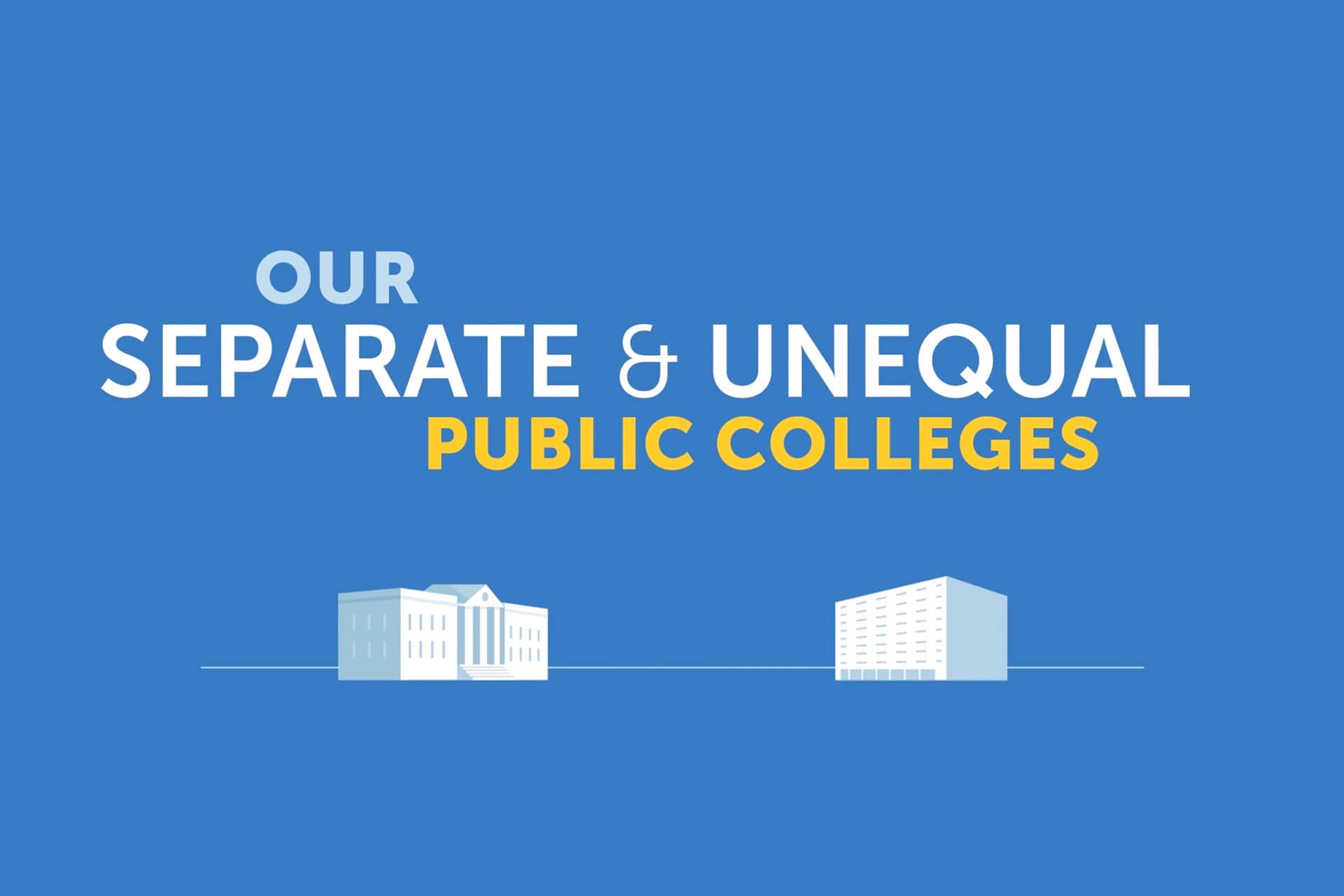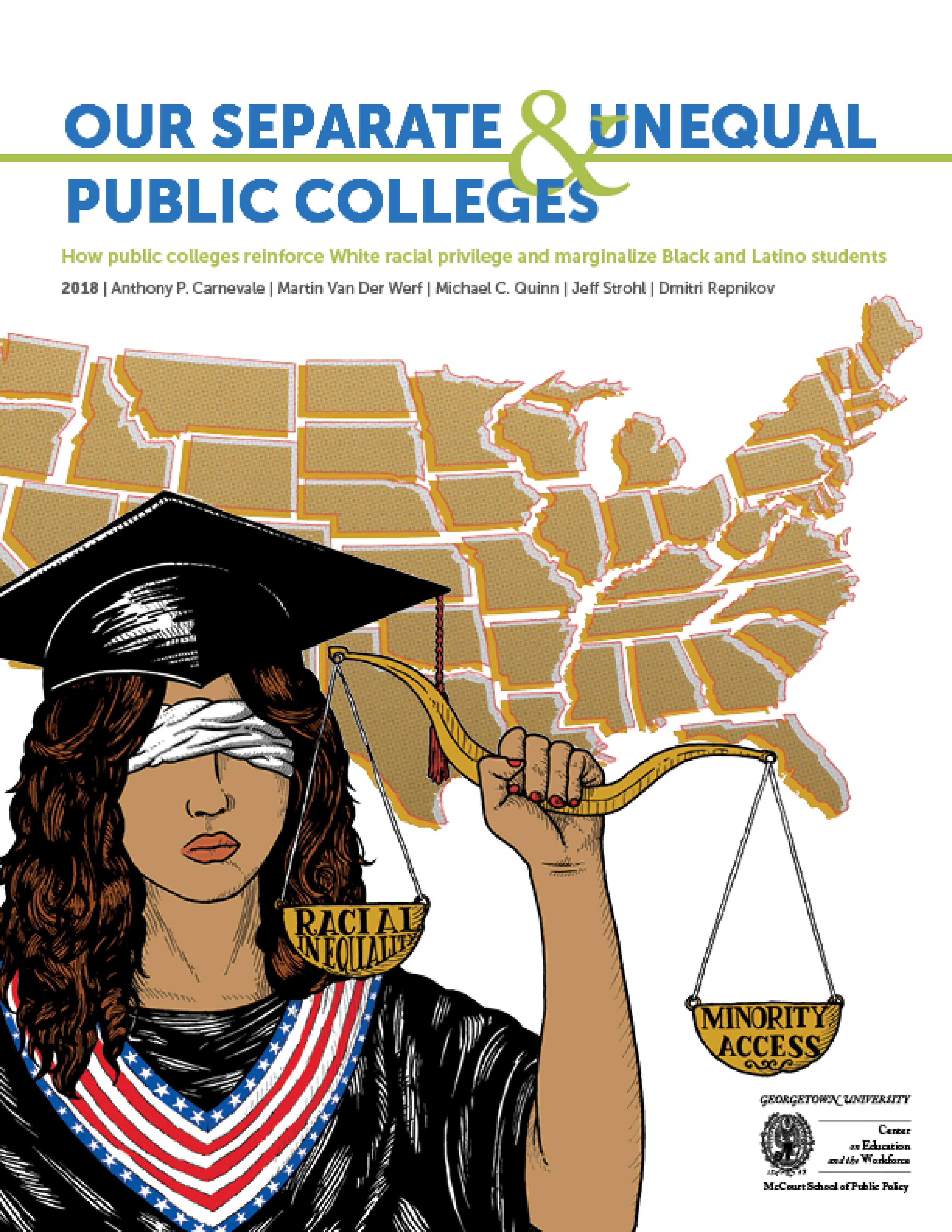Our Separate & Unequal Public Colleges
How Public Colleges Reinforce White Racial Privilege and Marginalize Black and Latino Students
Today’s higher education system is divided into two unequal tracks stratified by race and funding. White students are overrepresented at selective public colleges that are well-funded with high graduation rates, while Black/African and Hispanic/Latino students are funneled into overcrowded and underfunded open-access public colleges with low graduation rates. The gap in funding for instructional and academic support between selective and open-access public colleges has also been growing, which makes the system even more separate and unequal.
Key Findings
Video
Watch our video to learn more about today’s separate and unequal public higher education system divided by race that funnels Blacks and Latinos into underfunded open-access public colleges.
Resources
Our report finds that misguided admissions practices and growing funding gaps are splitting the public higher education system into two unequal tracks demarcated by race.


